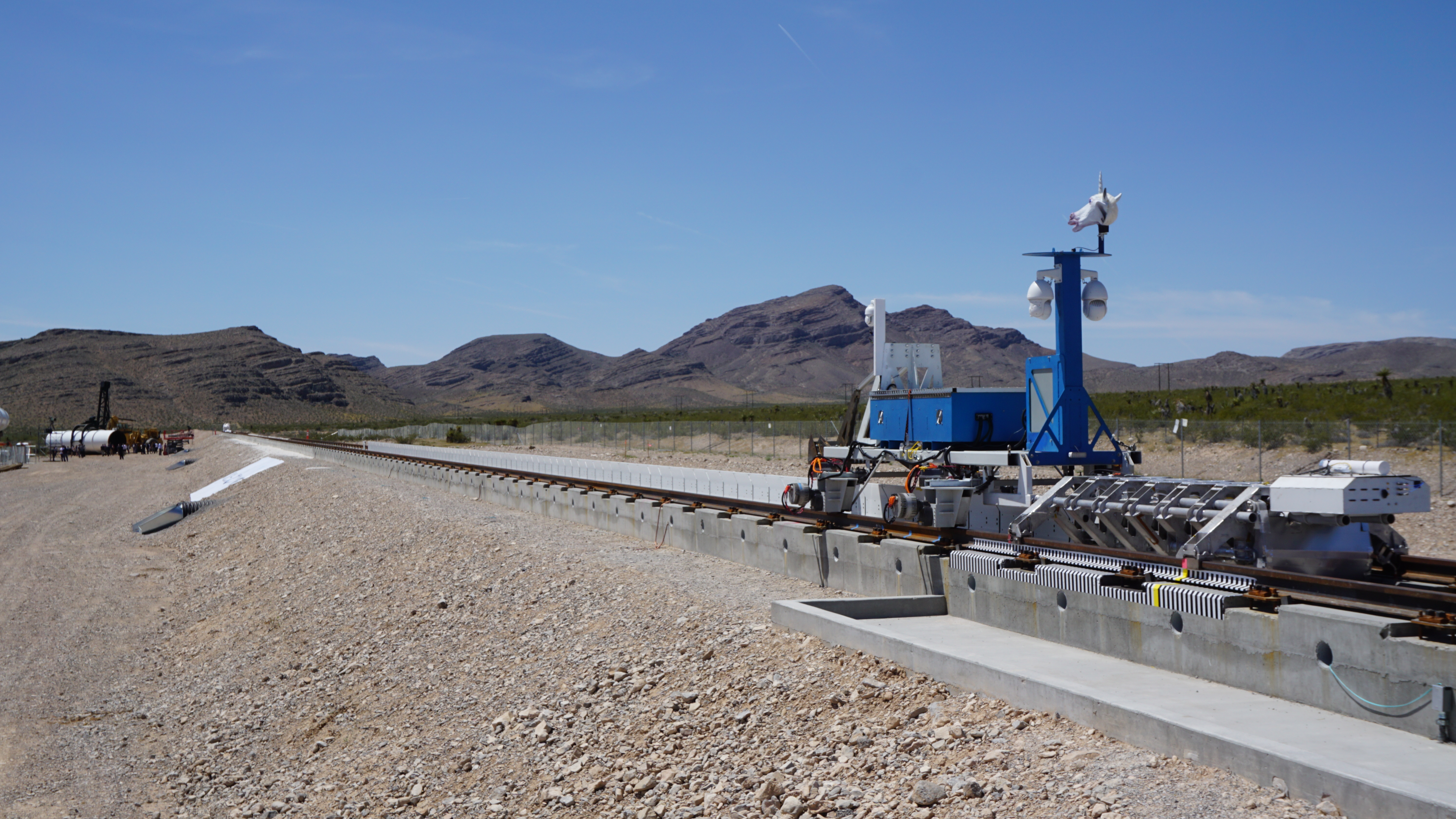
Hyperloop One, the company formerly known as Hyperloop Technology, has successfully propelled a 1,500-pound cart a half a mile by electromagnetic force alone.
While that might not sound all that impressive on paper, the event marks the first time a group has proven that the Hyperloop is not only possible, but it's commercially feasible as well.
The test was held 20 miles north of Las Vegas, Nevada at a test track specifically built by the Hyperloop One team. There, company leaders consisting of CEO Rob Lloyd, Executive Chairman and Co-Founder Shervin Pishevar and CTO Brogan BamBrogan (yes, that's actually his real name) showed the track and sled for the first time.
While Hyperloop technology has the theoretical potential to reach speeds of over 700 miles per hour, the test unit shown today only reached speeds of around 150mph, albeit in under two seconds.
BamBrogan says that the team hopes to increase the amount of stators (the electrically charged magnets that propel the sled) to improve the speed of the test unit and build a full-scale, quarter-mile-long track by the end of 2016.
Planes, trains and hyperloops
While both BamBrogan and Lloyd voiced their excitement about the Hyperloop's technology to expedite travel, the team said that their likely first target would be the shipping industry.
"Hyperloop will enter production in the next five years," Lloyd said. "It will move cargo by 2019, and passengers as soon as 2021."
Get daily insight, inspiration and deals in your inbox
Sign up for breaking news, reviews, opinion, top tech deals, and more.
While today's showing was an impressive demo of the propulsion system Hyperloop One plans on using in commercial trains, it admits that it still has testing to do on the braking systems, as well as installing pressurized tunnels around the track to create a frictionless environment.
Hyperloop One announced yesterday that it would hold a global competition that would pit civil engineers against one another to see who could come up with the best route for the first Hyperloop, with the winner's plan to be the team's first project.
The test, although brief, makes for an exciting proof of concept. Not only does it show that the Hyperloop is possible, but that it will be here much sooner than anyone would have thought.
Nick Pino is Managing Editor, TV and AV for TechRadar's sister site, Tom's Guide. Previously, he was the Senior Editor of Home Entertainment at TechRadar, covering TVs, headphones, speakers, video games, VR and streaming devices. He's also written for GamesRadar+, Official Xbox Magazine, PC Gamer and other outlets over the last decade, and he has a degree in computer science he's not using if anyone wants it.
